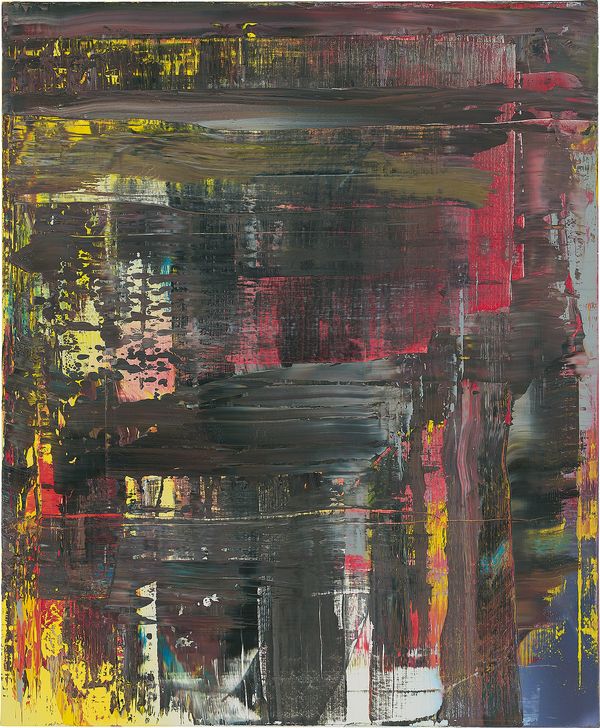A painter first and foremost, Gerhard Richter initially became widely known for his dreamlike blurred photo-paintings, which were appropriated from images found in photos and magazines and which explored the relationship between representation and abstraction. His approach reversed course as Richter experimented further with pure abstraction:
“[Painting abstracts] is more like walking, step by step, without an intention, until you discover where you are going. When I paint a landscape from a photograph or an image like this one, I can see the endpoint before I start, although in fact it always turns out slightly different than I imagined.” (Richter, quoted in Michael Kimmelman, ‘An Artist Beyond Isms’, The New York Times Magazine, 27 January 2002, online)
Around 1978, Richter began to apply paint in his abstract pictures by scraping. Typically starting with simple smears of paint or a geometric composition, Richter typically applies pressure using homemade wood and plexiglass squeegees to drag and wipe the paint repeatedly across his canvas, methodically building up and deconstructing the layers of paint. Manipulating the viscosity of the oil medium, Richter applies thin layers of paint such that small tears in the film create spontaneous windows into underlying layers, gathering in clusters or at other times rippling across the canvas to create compositional accents or axes.
Rendered in deep shades of purple and red in vertical and horizontal striations, Abstraktes Bild (715-6) is a particularly beautiful example of how Richter’s abstract paintings began to lean toward the more structured and minimalist end of abstraction, with visible stripes and grids. Streaked with undulating monochrome streaks and fiery elements of golden yellow periodically exposed through the disfigured paint layers, Richter revisited a favorite personal challenge of unifying bright colors with his more usually muted, melancholy palette, a theme he began working on with his Red-Blue-Yellow works in 1972.
